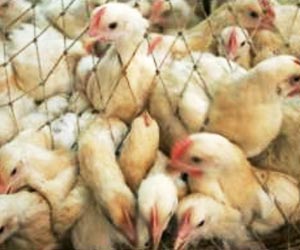New revelations into Seasonal flu virus’s mode of action may help in bringing down the disease.

‘The influenza virus is infamous for killing nearly 12,000 to 56,000 people annually in the United States.’





"We've solved a mystery, revealing a new aspect of our innate immune system and what flu has to do to get around it," says Nicholas Meyerson, a postdoctoral researcher in the BioFrontiers Institute and lead author of a paper published in the Nov. 8 issue of Cell Host and Microbe. The findings, several years in the making, could lead to a better understanding of how the seasonal flu virus, which typically originates in birds, makes its way to humans.
They could also inform the development of next-generation antivirals able to combat a broad spectrum of influenza strains, says co-senior author Robert Krug, a leading influenza researcher, and professor at the University of Texas at Austin.
The paper focuses on two key molecular players in the story of influenza infection: a human protein called TRIM25, which was recently discovered to play an important role in the human immune response to flu infection; and a protein called NS1 present in all strains of the influenza A virus and shown to bind TRIM25 to keep it from doing its job.
"We were basically trying to find out what TRIM25 was doing that flu did not want it to be doing and the role NS1 was playing in blocking that function," Krug said.
Advertisement
NS1 produced by the flu virus can block this function of TRIM25, enabling flu to circumvent the immune response and cause infection.
Advertisement
The paper reveals that TRIM25 is also a "restriction factor," a special protein present in the fastest-acting arm of the immune system, before spreading infection occurs.
"Restriction factors lie in wait, and should a virus be detected in one of your cells, they have immediate destructive ability," explains co-senior author Sara Sawyer, an associate professor of Molecular, Cellular, and Developmental Biology (MCDB) at CU Boulder.
Flu uses its NS1 protein to evade TRIM25's early flu-fighting response, the researchers found.
To do the study, the researchers first infected transgenic cell lines loaded with nonhuman primate versions of TRIM25 with the human influenza A virus. They found that the cells fought off the virus far better than human versions of the TRIM25 protein.
"This told us that TRIM25 has the capacity to crush influenza, but that its human form was less active," Meyerson said.
To find out how it crushes influenza, the researchers combined purified TRIM25 with purified viral ribonucleoproteins (vRNPs) -- eight-piece protein chains that house the influenza genome -- and used state-of-the-art electron microscopy to take pictures of what happened.
They found that TRIM25 appears to swiftly recognize the unique structure of vRNPs and clamps down on them to keep them from replicating inside the cell.
Other experiments confirmed that the NS1 protein in flu virus inhibits this function.
They also found that TRIM25 (previously believed to be present only in the cell cytoplasm) is also present in the cell nucleus, which is the same cellular location where flu replication occurs.
Sawyer and Meyerson are now looking to further investigate the role TRIM25 plays in cross-species transmission of influenza. More studies are needed, but Krug believes new therapeutics could be designed to block the NS1 protein produced by the flu virus, hobbling its ability to evade the human immune system.
"If you could somehow block NS1 from acting, you could block all strains of the virus," he says.
Source-Eurekalert












